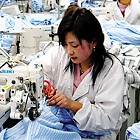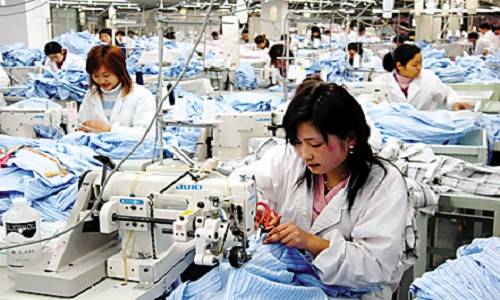"Adding to the worry of global brands and retailers, China’s textile and apparel companies are actively seeking business opportunities in the domestic retail market. Apparel retail sales in China reached 893.6 billion yuan in 2014 (around $137.5 billion), among which 30.77 per cent were sold online (up from 14.54 per cent in 2011). Although industry reports suggest apparel retail sales in China's Tier i and Tier II cities achieved almost zero growth in 2014, partially reflecting the negative impact of retail price increase on consumers' demand. But apparel retail sales in China's Tier III and IV cities and rural areas remain robust." opines Dr Sheng Lu."

China’s rising production cost and structural changes in the textile and apparel industry remain a major concern for global fashion retailers and brands. Although few other lower-wage countries can beat China in terms of industry integration, supply chain efficiency, and reliability however, it seems that the country’s production capacity remain unparalleled. As per 2014 statistics and information collated by Dr Sheng Lu, Assistant Professor at University of Delaware quoted in his blog, textile fiber production in China exceeded 50 million tons, accounting for 54.36 per cent of world share. By 2013, as much as 64.2 per cent of the world's chemical fibers, 64.1 per cent of synthetic fibers and 26.2 per cent of cotton were produced in China. Given China's vast production capacity, it will continue to be the top apparel sourcing destination for most EU and US fashion apparel companies for many years to come. Even Vietnam, the emerging sourcing hub also remains far behind with its apparel production recorded 2.85 billion units in 2015, which was only around 10 per cent of China's production.
Policy shift in China’s textile industry

Moreover, the global supply chain flow would also see the impact of China’s production policy shifting towards more value added and technology intensive textile products. Due to this structural adjustment, total industry output, the ratio of apparel, home textiles and industrial textiles has turned from 51:29:20 in 2010 to 46.8: 28.6: 24.6 in 2014. Further to overcome the pressure of rising labor and production cost, China's textile and apparel manufacturing base is gradually moving from the east coast to the western and central part of the country . Increasingly, China’s textile and apparel players are investing more on research and development shifting its focus from production volume.
Adding to the worry of global brands and retailers, China’s textile and apparel companies are actively seeking business opportunities in the domestic retail market. Apparel retail sales in China reached 893.6 billion yuan in 2014 (around $137.5 billion), among which 30.77 per cent were sold online (up from 14.54 per cent in 2011). Although industry reports suggest apparel retail sales in China's Tier i and Tier II cities achieved almost zero growth in 2014, partially reflecting the negative impact of retail price increase on consumers' demand. But apparel retail sales in China's Tier III and IV cities and rural areas remain robust, opines Dr Sheng Lu in his blog.
Companies following the traditional business model of manufacturing and exporting are facing their most difficult time since the 2008 financial meltdown. However, a number of apparel companies are now focusing on function upgrading. However, China's textile and apparel industry has witnessed slow growth specifically, output of China's textile and apparel industry grew only 7.0 per cent between 2013-2014, recording a significant drop from 10.3 per cent between 2009-2010. Experts believe given the downward pressure on China's economy and uncertainties in the world marketplace, such a slow-growth pattern are likely to continue in the years ahead.












